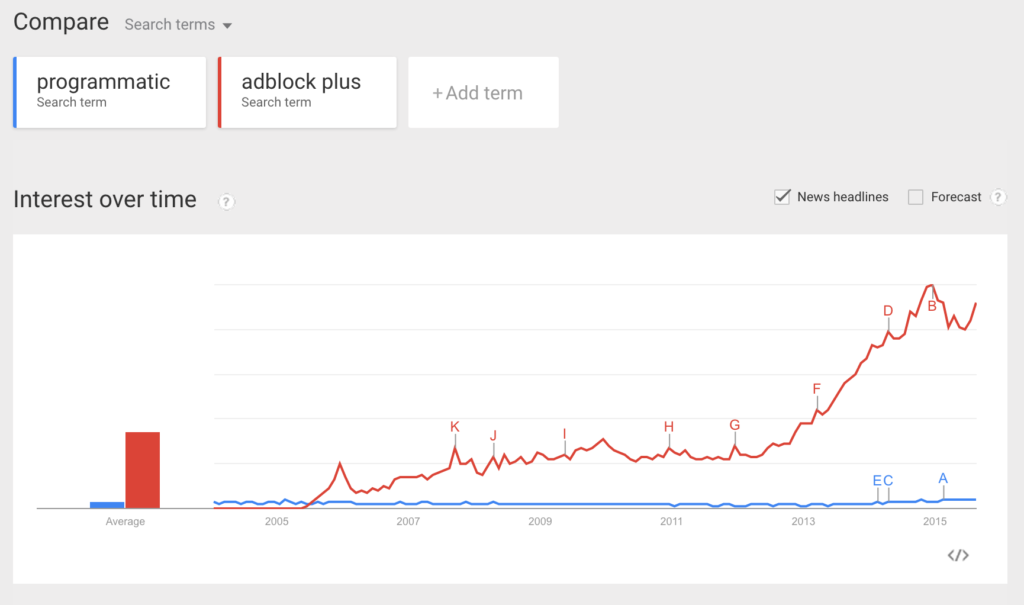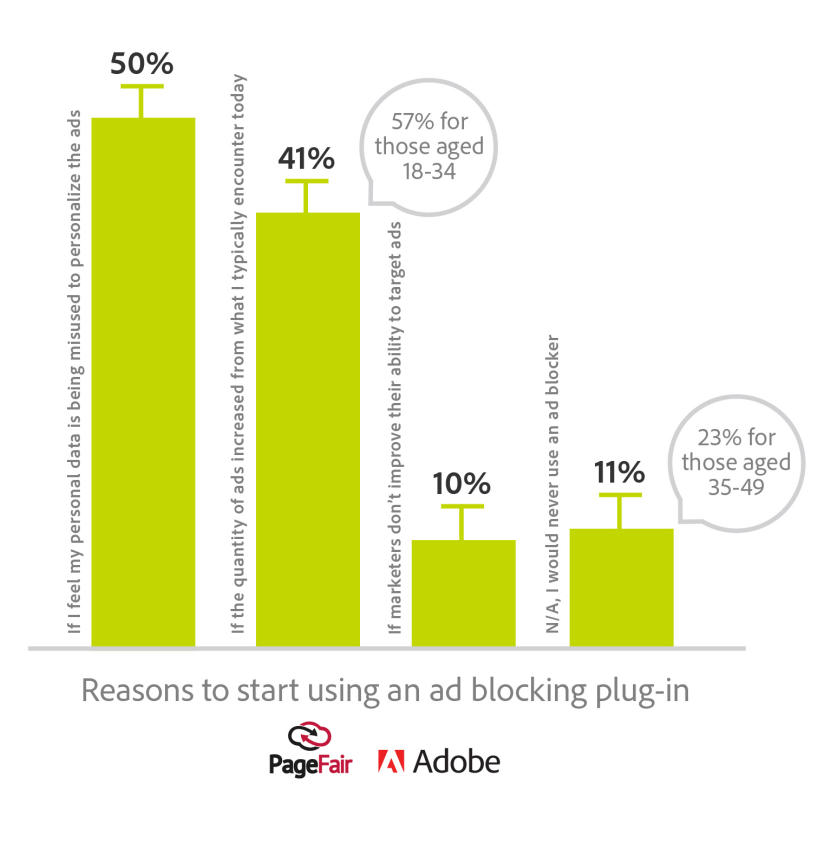When AdBlock Plus, an open source software allowing web users to browse the internet ad-free, was first released in 2007, it ignited a heated, global debate about the rights of online publishers. Some brushed off the emergence of these tools, others went as far as to proclaim ad blocking as tantamount to theft. With other adblocking software competitors making their way into the market and taking more revenue share from website owners, the issue has fast become cited as one of the top threats to publishers in 2015.
Late last week, PageFair, a company helping publishers reclaim revenue lost to adblockers, teamed up with Adobe to release the most comprehensive report covering the global use of adblocking to date. From that report, we pulled this list of the most astounding facts about ad blocking in 2014 and 2015.
1. The number of people using ad blocking software grew by 42% from 2014 to 2015.
And is expected to continue growing into 2016, not only on desktop, but on mobile devices as well. In fact, sources estimate between 4% and 6% of all web users use some form of the technology. I put a few key terms related to ad blocking into Google Trends as an experiment, and the spike in public interest globally between 2013 and present blew my socks off.

To put it a little more into the perspective of the industry, look at when “adblock plus” searches are compared to “programmatic” searches.
There are a many direct and indirect drivers of the ballooning adoption of ad blocking technologies. Chiefly, lack of education about the impacts of ad blocking on online businesses paired with a global marketing and PR blitz from Adblock Plus have been a one-two-punch to the gut of the publishing ecosystem.
2. The estimated loss of global revenue due to blocked advertising during 2015 was over $21.8B
That’s right, billion. That’s more than the GDP of Tajikistan. It’s more than Steve Balmer’s net worth. You feel me? And it’s expected to grow to $41.4B in 2016.
The worst part is that most publishers have no idea how much of their revenue is being lost when ad block users visit their site. Nor do they know what proportion of their readers have ad blockers installed, or on which devices. PageFair is one of the champions in the fight to give publishers access to transparent data about adblock activity on their domain, among others.
3. Oregon has the highest ad blocking rate in the United States at 16.4%. Washington DC has the lowest at 8.2%.
Nice job, OREGON. Geez.
4. Gaming websites have the highest global instance of ad blocking, accounting for 26.5% of all blocked ads.

Weird one, right? The thing is, the audience demographics of a site has a lot to do with ad blocking behavior. According to the PageFair-Adobe report, “Websites that cater to young, technically savvy, or predominantly male audiences are significantly worse affected.” That means gaming, social networking, technology, and sports websites all came in at the top of the list. Who had the lowest rate of blocked ads? Government and legal sites; makes sense, since Washington DC had the lowest ad block rate in the US.
5. Though mobile accounts for 38% if global web traffic, only 1.6% of ad block traffic came from mobile users.
Though Android users can install a mobile AdBlock Plus plugin on their devices, Android support for filtering traffic on their OS is limited. Apple announced that they intend to extend support for blocking content on iOS 9 and in Safari 9, giving adblockers some major leeway to penetrate the mobile market, right through the App Store. As ad blockers begin to crack the code for increasing adoption on mobile devices, ad blocking will see another period of catastrophic growth.
6. 50% of surveyed users said that their main motive for using an adblocker was their fear that personalization of ads infringes on their privacy/data.
This statistic really taps into the complexity of the problem. Ad block users are rightfully concerned about protecting the privacy of their data when they are browsing the internet. Redirecting and malware ads are another legitimate concern. In order to fight back, advocates for publishers and readers have the burden of educating the public about the impacts of blocking ads, solving for gaps in solutions to privacy and malicious ads, and most importantly, arming publishers with additional revenue streams so they can be less dependent on advertising revenue and thus, less vulnerable to ad block traffic.
What are your concerns about the rise in online ad blocking? Bring them to San Francisco with you this September 9th for sovrn’s inaugural publisher summit, I². Sean Blanchfield, CEO of PageFair, will be talking about all things ad blocking and digging into his recommended solutions for publishers and the industry at large.
Come see Sean talk about ad blocking at I²! Register for your free pass at isquaredevent.com.



